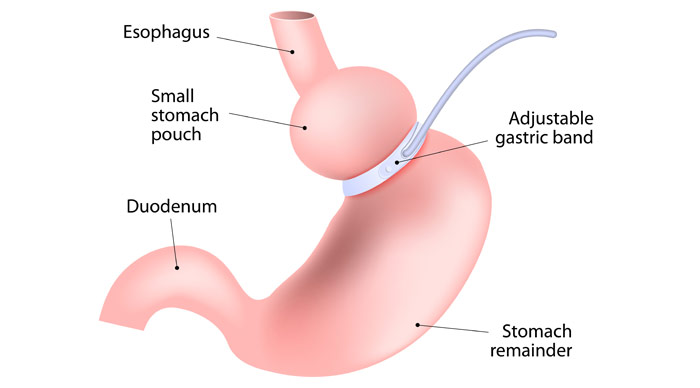Laparoscopic Adjustable Gastric Band
About the LAP Band Procedure
The laparoscopic adjustable gastric band (LAGB or LAP band) procedure has been performed in the United States since 2001.
How LAP Band Works
During a LAP band procedure, several small incisions are made in the patient's abdomen, and using a laparoscope for guidance, the surgeon places an adjustable band around the upper portion of the stomach.
The band is connected to a reservoir, which the surgeon can tighten or loosen. Weight loss occurs because the newly created upper pouch will only allow the patient to consume small amounts of food at a time.
LAP band has been shown to produce short-term weight loss. Since the procedure has only been available since 2001, the effect on long-term weight loss will continue to be monitored. This procedure is less invasive, fewer complications are seen, and patients experience an improvement in obesity-related health issues. The surgeon and the patient will determine the type of weight loss surgical procedure that is suitable for each individual.

Potential Risks
Complications that may occur with LAGB surgery include:
- Slippage of the band (2 - 3 percent of patients)
- Band erosion (1 percent of patients)
- Port infection (1 percent of patients)
- Injury to adjacent organs (0.5 percent of patients)
- Death within 30 days (< 0.5 percent of patients)
When looking at the risks associated with weight loss surgery, it is important to remember that obesity itself carries a high risk of mortality due to obesity-related illnesses. For many patients, the potential risks from not having the surgery may be greater than the risks from possible complications of having the procedure.
Information provided by the Massachusetts Expert Panel on Weight Loss Surgery Summary from the Betsy Lehman Center for Patient Safety and Medical Error Reduction within the Department of Public Health.
